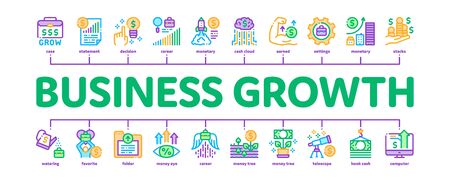1. Prioritizing Tech That Solves Real Problems
Don’t Let FOMO Drive Your Tech Decisions
As a US startup CEO, it’s easy to get distracted by the latest tech trends. New apps and platforms seem to pop up daily, promising to make your business run smoother. But before jumping in, ask yourself: Does this technology solve a real problem for my startup? Many tools look cool but add little value or even create more complexity.
How to Identify the Technology Your Startup Actually Needs
The best way to choose tech is to focus on pain points unique to your business and the US market. Start by asking your team where they waste time or experience frustration. Is it scheduling? Communication? Sales tracking? Once you’ve identified bottlenecks, research solutions that directly address those issues rather than chasing after every new gadget.
Questions to Ask Before Adopting Any Tool
- What problem does this solve for us?
- How will this integrate with our current systems?
- Will it save us time or money?
- Is it scalable as we grow?
- Is customer support US-based and responsive?
Assessing ROI: What Matters in the US Market
For startups in the US, ROI (Return on Investment) is more than just saving dollars—it’s about freeing up resources so you can focus on growth. Think about how each tool impacts your bottom line and your team’s productivity. The table below helps you quickly compare potential tools:
| Tool/Platform | Main Problem Solved | Estimated Time Saved/Week | Monthly Cost ($) | Easy Integration? |
|---|---|---|---|---|
| Slack | Team Communication | 5 hours | $7/user | Yes |
| Trello | Project Management | 3 hours | $6/user | Yes |
| HubSpot CRM | Sales Tracking & Automation | 4 hours | $50/upwards | Yes |
| Docusign | E-signatures & Agreements | 2 hours | $10/user | Yes |
Pain Points Specific to the US Market
- Data Privacy: Make sure any platform you use complies with US regulations like CCPA.
- Diverse Teams: Tools should support collaboration across different time zones and backgrounds.
- Pace of Change: Choose solutions that can scale and adapt as your business grows fast.
Your Action Step:
Create a simple list of must-have features before shopping for new tech. Involve your team in the process—they’re the ones who will use these tools daily! This approach keeps your startup focused, efficient, and ready for anything the US market throws at you.
2. Automation Without Losing Your Human Touch
As a US startup CEO, its tempting to automate every repetitive task with the latest tech tools. From scheduling meetings to handling payroll and even managing customer inquiries, automation can save you serious time and money. But heres the catch: over-automation can make your company feel cold and impersonal—something American customers and employees notice right away.
Why Balance Matters
In the US business culture, authentic relationships are everything. People want to feel seen, heard, and valued—whether theyre customers or part of your team. If all they get are automated replies and generic processes, you risk losing trust and loyalty. The key is knowing what to automate and where a personal touch still matters.
What to Automate vs. Where to Stay Personal
| Task | Best for Automation | Needs Human Touch |
|---|---|---|
| Scheduling Meetings | Automated calendar tools (e.g., Calendly) | Personal outreach for VIPs or sensitive meetings |
| Payroll & HR Admin | Automated payroll software (e.g., Gusto) | Employee recognition, feedback sessions |
| Customer Support | Chatbots for FAQs, ticket routing | Complex issues, upset customers, onboarding new clients |
| Email Marketing | Automated drip campaigns | Personalized responses to replies or special occasions |
Tips to Keep It Real While Automating
- Use automation as a filter, not a wall. Let technology handle routine tasks so your team can focus on high-impact conversations.
- Add personality to your automations. Use friendly, conversational language in automated emails and chatbot scripts that match your brand’s voice.
- Monitor feedback closely. Ask for input from both customers and employees—are they feeling disconnected? Adjust accordingly.
A Real-World Example
A San Francisco-based SaaS startup used an AI chatbot for basic support but made sure every negative review triggered a direct call from a human manager within 24 hours. As a result, their customer satisfaction scores went up without sacrificing efficiency.

3. Mastering Communication and Collaboration Tools
Top Platforms for US Startup CEOs
Running a startup in the US means working fast, staying connected, and making every tool count. The right communication and collaboration platforms can make or break your team’s efficiency. Let’s break down some of the most popular tools used by American startups and see what makes them stand out:
| Platform | Main Use | Why Startups Love It |
|---|---|---|
| Slack | Instant messaging and team channels | Easy to organize conversations, integrates with tons of apps, reduces internal emails |
| Zoom | Video meetings and webinars | Reliable video quality, simple scheduling, widely adopted by US businesses |
| Notion | Project management and documentation | Customizable workspaces, combines notes/tasks/databases, great for remote teams |
| Trello/Asana | Task and project tracking | User-friendly visual boards, helps track progress, keeps everyone accountable |
| Google Workspace | Email, docs, drive, calendar | Real-time collaboration on files, easy sharing, widely trusted in the US market |
Avoiding Digital Overwhelm: Set Boundaries & Norms
With so many tools, it’s easy for digital overload to sneak up on you. Here are practical tips for US startup CEOs to stay productive without burning out:
- Create “Do Not Disturb” Hours: Set specific times when Slack or email notifications are muted—respect these hours as a team norm.
- Default to Asynchronous Updates: Encourage using recorded Loom videos or written updates in Notion instead of always scheduling live meetings.
- Clear Channel Guidelines: Name Slack channels clearly (like
#announcements-us-team) and specify what should be posted where. - Set Meeting-Free Days: Many American startups set aside one day each week for deep work with no scheduled meetings.
- Define Response Expectations: Make it clear when a quick reply is needed (use emojis like :zap:), versus when something can wait.
- Avoid Tool Overlap: Audit your stack regularly—if two apps do the same thing, pick one and stick with it.
- Centralize Documentation: Use Notion or Google Drive as your “single source of truth,” so team members aren’t searching everywhere for info.
Sample Communication Norms Table for Your Startup
| Tool/Channel | Main Purpose | Expected Response Time |
|---|---|---|
| Slack Direct Message | Quick questions / urgent issues during work hours only | < 2 hours (during business hours) |
| External partners / non-urgent internal comms | < 24 hours (weekdays) | |
| #general Slack Channel | Company-wide updates / announcements only | No response needed unless tagged |
| Notion Project Page Comments | Status updates / feedback on tasks | < 1 business day |
Your Takeaway: Tech Should Work for You—Not the Other Way Around!
The best US startup CEOs use technology intentionally. By mastering these tools—and setting healthy boundaries—you’ll keep your team focused, energized, and ready to grow.
4. Protecting Your Data—and Your Team’s
Keep Your Startup Safe: Simple Steps for Data Security
If you’re running a startup in the US, safeguarding your data isn’t just about fancy tech—it’s about smart habits, good partners, and making cybersecurity part of your team’s daily mindset. Here’s how to make it happen:
Step 1: Secure Sensitive Information
- Use Strong Passwords: Encourage everyone to use unique, complex passwords (think phrases, not words) and change them regularly.
- Enable Multi-Factor Authentication (MFA): Add a second layer of protection on all key accounts—email, cloud storage, internal tools.
- Limit Access: Only give team members access to the data and tools they need to do their jobs. Review permissions quarterly.
- Encrypt Everything: Use encryption for files in transit and at rest, especially customer data and financials.
Step 2: Choose Trustworthy SaaS Partners
Not all software is created equal. Before signing up for any SaaS (Software as a Service) tool, check these essentials:
| SaaS Security Checklist | What to Look For |
|---|---|
| Data Encryption | Does the service encrypt your data both at rest and in transit? |
| Compliance Standards | Look for SOC 2, ISO 27001, or GDPR compliance badges. |
| User Access Controls | Can you manage who sees what inside the app? |
| Incident Response Policy | Does the company have a clear process if something goes wrong? |
| Transparent Privacy Policy | Is it easy to find out how your data is used and stored? |
Step 3: Build a Culture of Cybersecurity Mindfulness
- Treat Security Like Teamwork: Talk openly about security risks in meetings. Make it part of onboarding for every new hire.
- Run Regular Training: Use free or low-cost resources to teach your team how to spot phishing emails and social engineering tricks.
- Create a “See Something, Say Something” Environment: Reward team members who speak up about suspicious activity or potential threats—no blame games.
- Simplify Reporting: Have an easy-to-find email or Slack channel for reporting security concerns.
Your Data Security To-Do List
| Action Item | How Often? |
|---|---|
| Password Updates | Every 90 days |
| MFA Checks on Accounts | Quarterly review |
| SaaS Vendor Audit | Annually or before signing new contracts |
| Crew Training Sessions | Semi-annually (twice per year) |
| Access Rights Review | Quarterly or after staff changes |
The Bottom Line: Security Is Everyone’s Job
No matter your role at a US startup, keeping data safe is a shared responsibility. Start with the basics above, stay curious, and empower your team to help protect what you’re building together.
5. Staying Agile: Knowing When to Upgrade or Pivot Tech
Why Agility Matters for US Startup CEOs
In the fast-paced world of American startups, technology is both your secret weapon and your potential Achilles’ heel. Tools that work today might slow you down tomorrow. That’s why staying agile—knowing when to upgrade, pivot, or ditch tools altogether—is essential for efficiency and competitiveness.
Strategies for Tracking Technology Effectiveness
Keeping tabs on how your tech stack performs doesn’t have to be complicated. Here are some straightforward strategies US startup CEOs use:
- Set Clear KPIs: Define what success looks like for each tool (e.g., time saved, error reduction, improved collaboration).
- Quarterly Tech Reviews: Schedule regular check-ins to see if tools still align with business goals.
- User Analytics: Use built-in analytics to track usage and identify underutilized features.
Sample Tech Effectiveness Review Table
| Tool Name | KPI | Current Performance | Action Needed |
|---|---|---|---|
| Slack | Team engagement rate > 80% | 75% | Review channels/offer training |
| Trello | Project completion time < 2 weeks | 3 weeks | Explore automation/integrations |
| QuickBooks | Error-free reports monthly | No errors last 2 months | No action needed |
Listening to Your Team’s Feedback
Your team is on the frontlines using these tools daily. Their input is gold when it comes to identifying pain points and opportunities. Try these approaches:
- Monthly Surveys: Keep it short—just a few questions about ease of use and challenges.
- Open Door Policy: Encourage informal feedback in meetings or via direct messages.
- Pilot Programs: Test new tools with a small group before rolling them out company-wide.
Knowing When to Update or Switch Tools
The biggest mistake? Hanging onto outdated tech just because “that’s what we’ve always used.” Here’s how US startup leaders decide when it’s time for a change:
- If a tool consistently fails KPIs or team satisfaction drops below a set threshold, start looking for alternatives.
- If a competitor uses a more advanced or integrated solution that could give them an edge, consider upgrading.
- If vendor support becomes slow or costly, weigh the benefits of switching.
- If your startup’s needs outgrow current features (like moving from spreadsheets to CRM), it’s time to scale up.
Pivoting vs Upgrading: Quick Reference Table
| Situation | Pivot (New Tool) | Upgrade (Existing Tool) |
|---|---|---|
| Lack of integration with other systems | ✓ | |
| Small feature gap but otherwise effective | ✓ | |
| Poor customer support from vendor | ✓ | |
| Your company doubled in size quickly | ✓ |
The Takeaway: Stay Curious and Adaptable!
The best US startup CEOs don’t let their tech stack get stale. Stay curious about new solutions, keep communication lines open with your team, and don’t be afraid to make bold moves when technology starts holding you back instead of pushing you forward.


